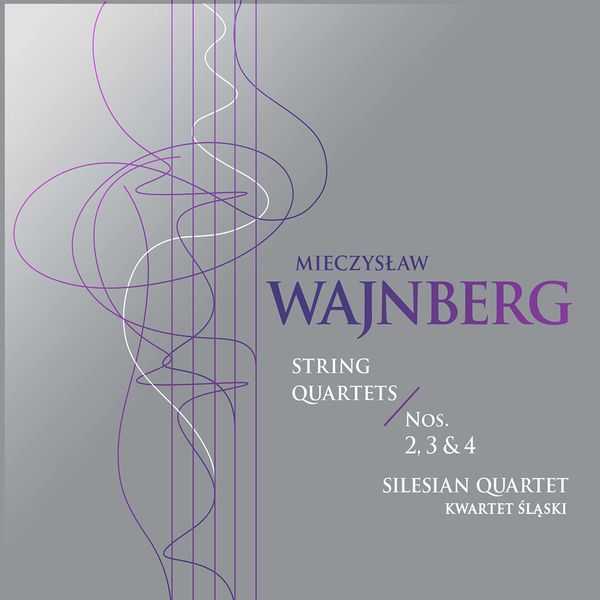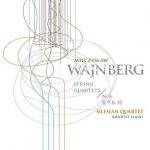

Composer: Mieczysław Weinberg
Performer: Silesian Quartet
Format: FLAC (tracks)
Label: CD Accord
Catalogue: ACD291
Release: 2022
Size: 1.37 GB
Recovery: +3%
Scan: yes
String Quartet No. 2, Op. 3
01. I. Allegro
02. II. Andante
03. III. Allegretto
04. IV. Presto
String Quartet No. 3, Op. 14
05. I. Presto
06. II. Andante sostenuto
07. III. Allegretto
String Quartet No. 4, Op. 20
08. I. Allegro comodo
09. II. Moderato assai
10. III. Largo marciale
11. IV. Allegro moderato
Mieczysław Weinberg (Polish: Wajnberg) wrote his first string quartet in May 1937. In autumn 1939, he made his way in dramatic circumstances to the Soviet Union, and there, exempted from military service due to poor health, he was given the chance to continue his training in composition at the Minsk Conservatory. His teacher there was 67-year-old Vasily Zolotarev, once a pupil of Mily Balakirev and Nikolai Rimsky-Korsakov. Persuaded by Professor Zolotarev, or perhaps acting on his own initiative, Weinberg began writing another string quartet on 25 November. He finished this first ‘student work’, and his second for such a line-up, on 13 March 1940. He dedicated it to his mother and sister, whose fate was unknown to him. (…) A dozen or so months later, when Germany invaded its former ally in the summer of 1941, Weinberg was forced to flee for a second time. On this occasion, he made his way to Tashkent, to where members of the Leningrad Conservatory were also evacuated in the autumn. In December, he had an opportunity to hear his String Quartet No. 2, Op. 3 performed by these exiled musicians. Afterwards, the work probably ended up in a drawer and was shown only to composer-friends, which would explain the similarity between this piece and certain episodes from Dmitri Shostakovich’s String Quartets Nos. 2 and 6, written at a later period when both composers maintained close contact. Forty-five years later, Weinberg returned to the material of his youth. Using the experience he had gained over the past decades, he made certain alterations. He changed very little in the first two movements: he made a few abbreviations, developed certain themes in a slightly different way, and added variety to others by complementing existing parts with new ones; sometimes he also changed the articulation or register. He then added a new movement in the form of a short delicate intermezzo (largely through playing con sordino and the abundance of rests between Quartet No. 2, this time assigned opus number 145, that the Silesian Quartet performs on this disc.



